Asanogawa-Ohashi Bridge
In 2000, the Saigawa-Ohashi Bridge was registered as a tangible cultural property, and another bridge was registered at the same time.
That is the Asanogawa-Ohashi Bridge.
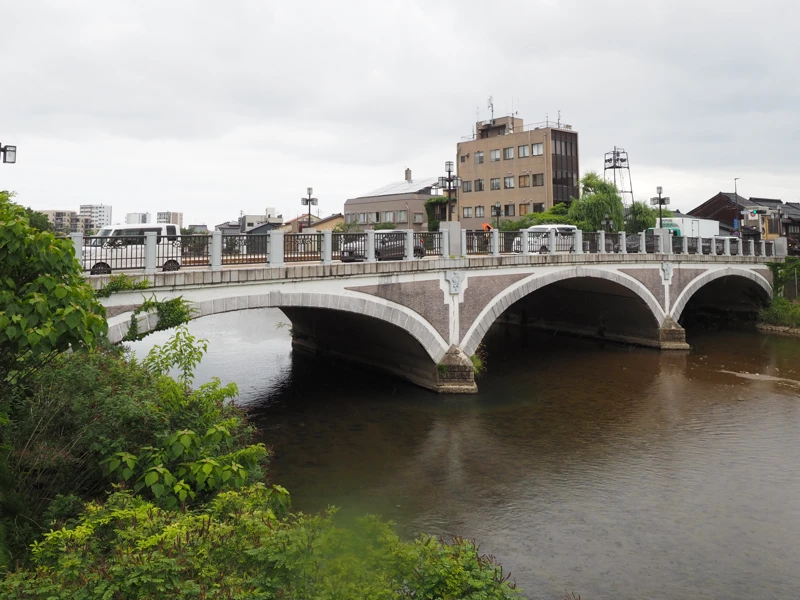
The first bridge was built in 1594.
The bridge was repaired or replaced at least 10 times before the Meiji era.
About the previous bridge, the bridge-crossing ceremony was held in August 1904, so the bridge must be completed in the year.
Now let us look at the current bridge. The current bridge was built to carry streetcars and automobiles.
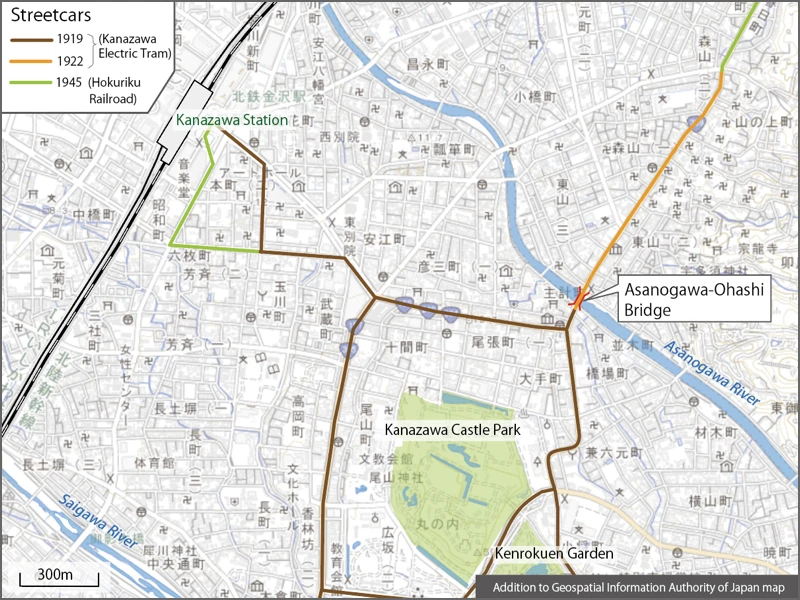
Kanazawa Electric Tram, which started streetcar operations in Kanazawa in 1919, extended its route to the south of the Saigawa River and to the north of the Asanogawa River in 1922.
The track on the north side of the Asanogawa River was completed in July, and in December, when the Asanogawa-Ohashi Bridge was completed, the right and left banks of the river were connected by a track.
Note that a flood occurred in August 1922, and many bridges were washed away on both the Saigawa and Asanogawa Rivers. The reinforced concrete Saigawa-Ohashi Bridge was washed away at that time.
The Asanogawa Bridge was under construction and thus escaped being washed away.
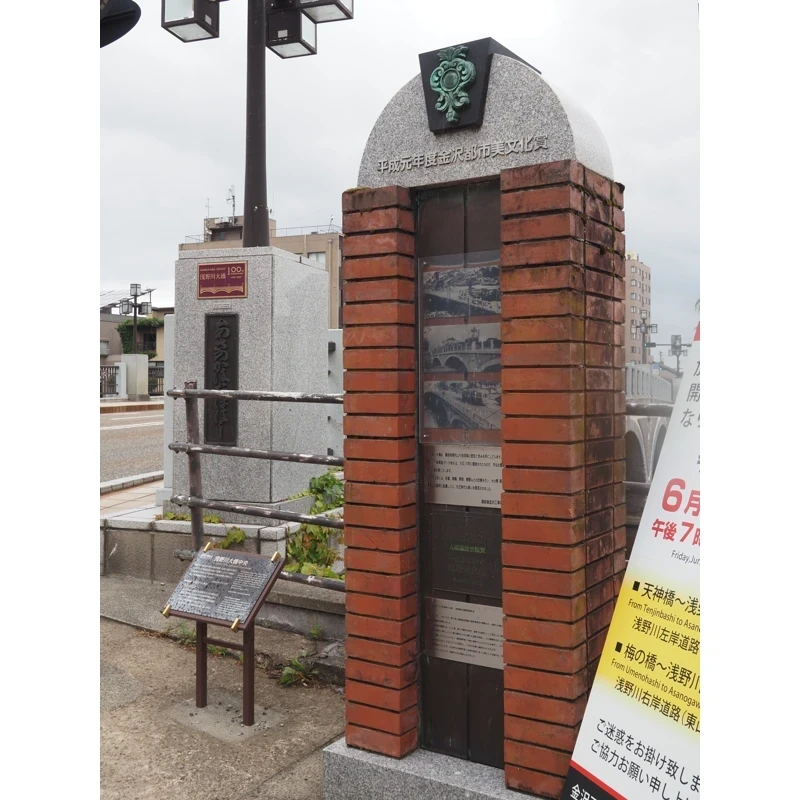
This is the south side of the bridge.
The brick monument was built in 1993 to commemorate a project that was awarded in 1989 for restoring the bridge to its Taisho Era appearance through repair work.
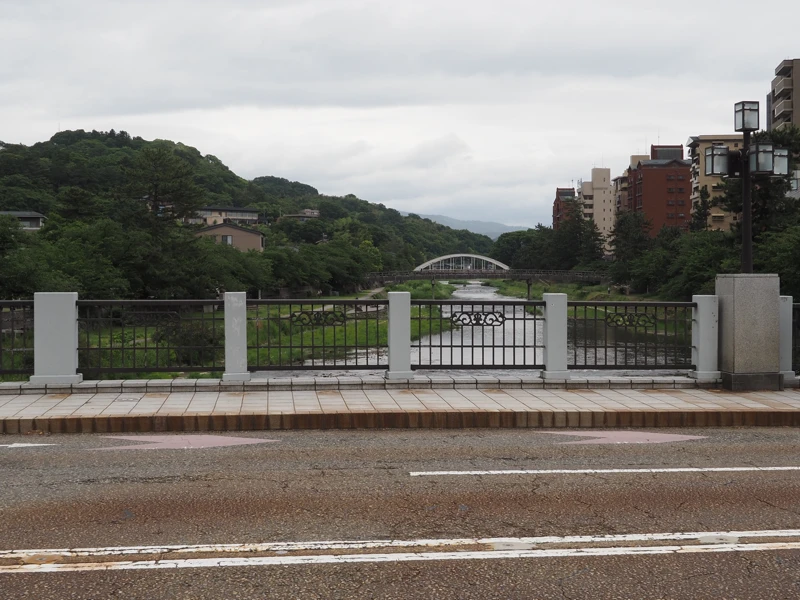
Looking upstream from the bridge.
The streetcars on the Asanogawa-Ohashi was discontinued in December 1966 and replaced by buses. After that, the bridge became a road bridge. (All streetcars on the Kanazawa City were discontinued in February 1967.)
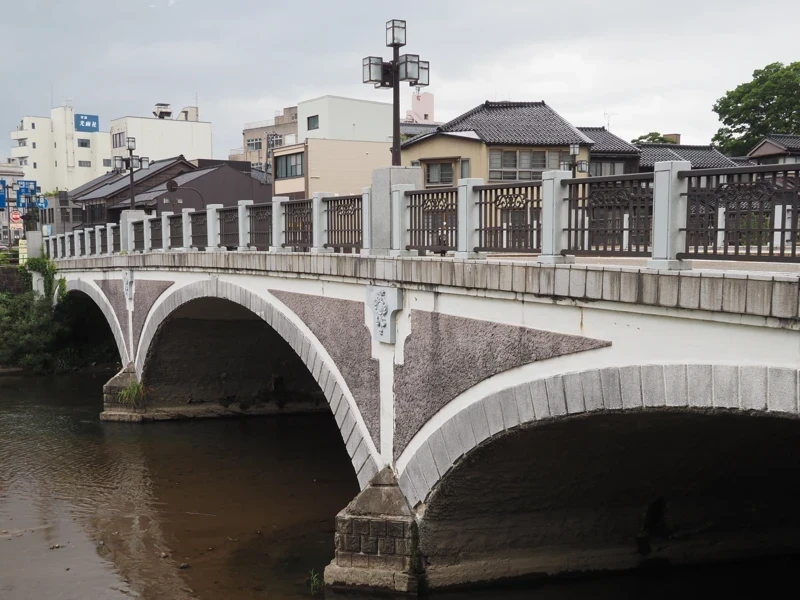
The bridge seen from the right bank (north side).
In 1943, the prefectural civil engineering division removed metal parts such as handrails and lighting from eight bridges, including the Asanogawa-Ohashi, due to wartime metal offerings. The 1989 restoration work mentioned above refers to the restoration of those parts and the restoration of the reliefs. At the same time, electric cables and other structures on the bridge were buried in the sidewalk to improve the appearance of the bridge.
The reliefs on the side of the bridge are the restored reliefs.
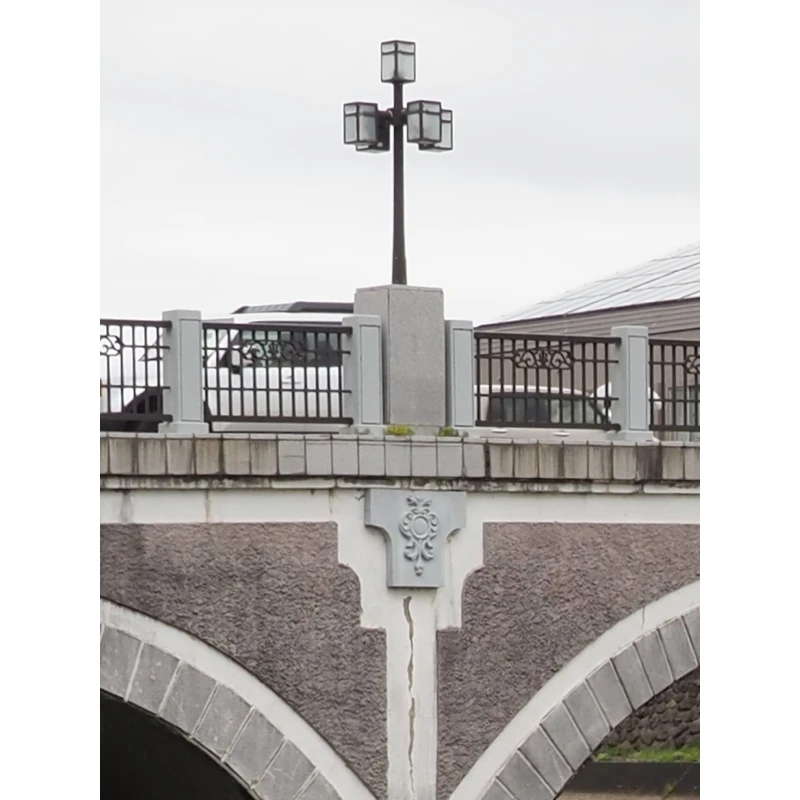
The postwar disaster of the Asanogawa River should also be mentioned. A major flood caused by torrential rains occurred on August 24, 1953. At that time, all bridges on the Asanogawa River were washed away except for the Asanogawa-Ohahi. The levee collapse inundated 1,870 ha of land and 7,000 homes. Subsequently, the Asanogawa River underwent full-scale river improvement. First, the upper reaches of the river were revetted, followed by the completion of a waterway in 1960, and other urban construction work. In 1974, the Asano River drainage channel was completed upstream, allowing water to be discharged into the Saigawa River.
Let us return to bridge.
The Asanogawa-Ohashi was registered as a Tangible Cultural Property of Japan in 2000.
The newel on the right bank (upstream side). It fitted plates of “Registered Tangible Cultural Property” and “Completed in December, 1922".
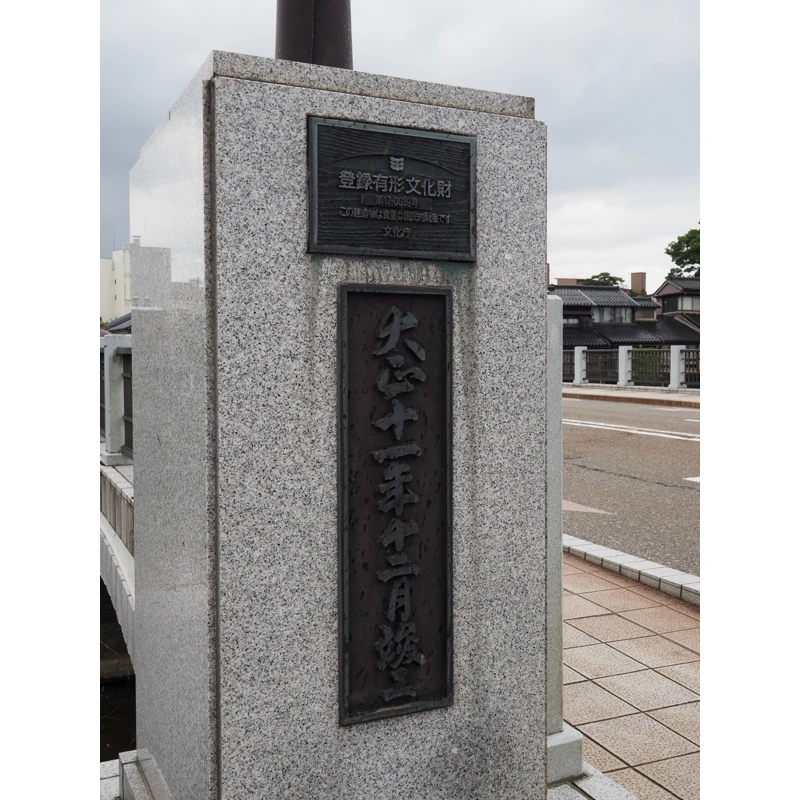
In 2016, the sidewalk was widened to improve safety as concerns about contact between pedestrians and cars increased with the growing number of tourists. The lanes were slightly narrowed and the sidewalks were widened by 50 cm to compensate.
A ceremony was held in 2022 to celebrate the 100th anniversary of its completion.
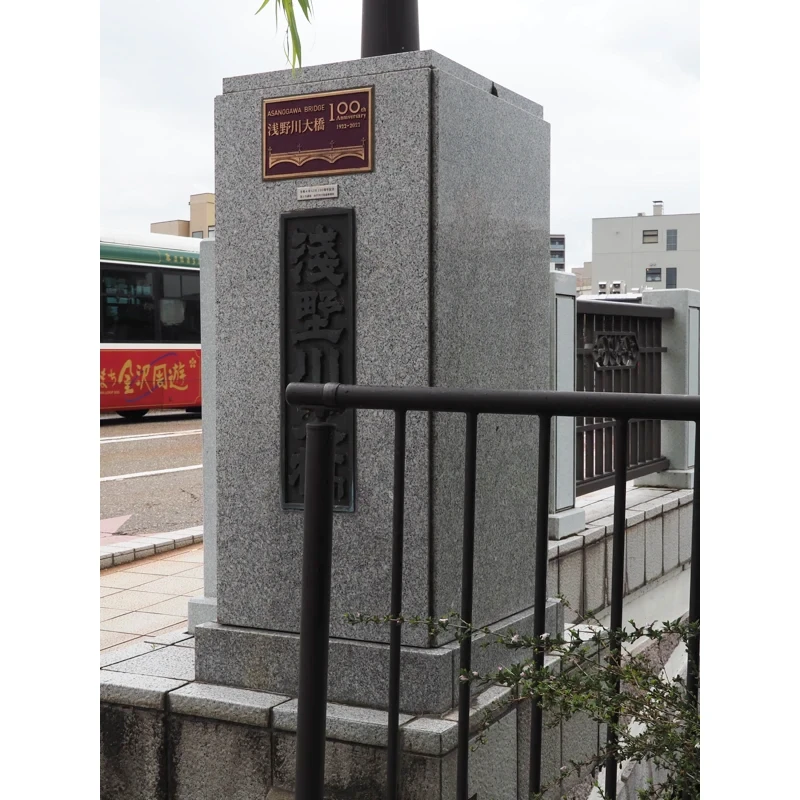
Plaques were attached to both the north and south newels of the bridge to commemorate the 100th anniversary.
This is the north side.
The Asanogawa-Ohashi seen from downstream.

Completed in 1922.
It is a triple-arch reinforced concrete bridge with a length of 55m and a width of 17m.
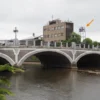
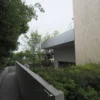
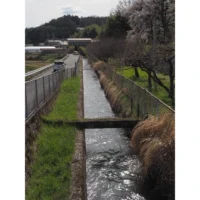
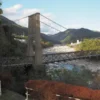
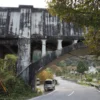
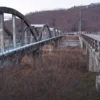
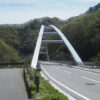
Discussion
New Comments
No comments yet. Be the first one!